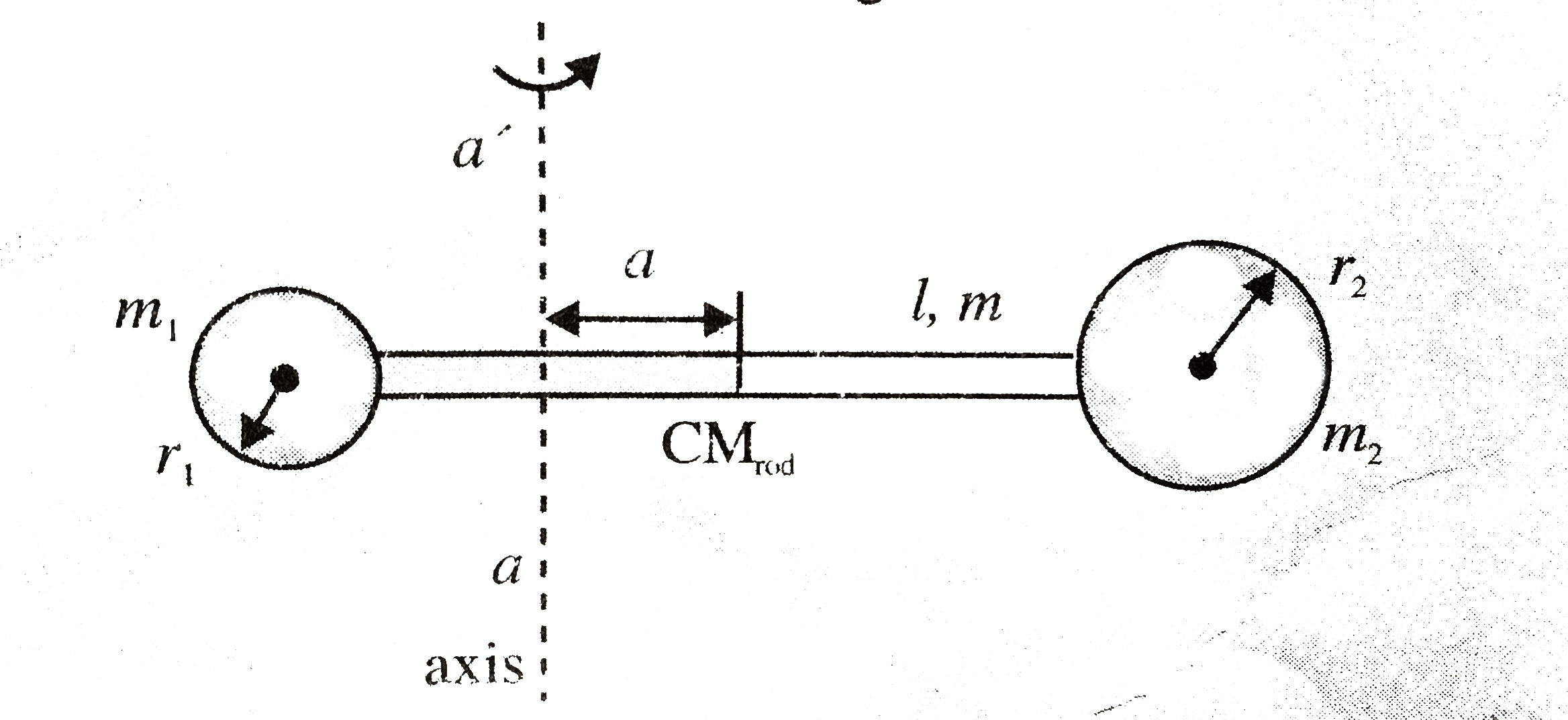If the temperature of a uniform rod is slighely increased by Δt its moment of inertia I about perpendicular bisector increases by
zero
αIΔt
2αIΔt
3αIΔt
To solve the problem of how the moment of inertia I of a uniform rod changes when its temperature is slightly increased by ΔT, we can follow these steps:
1. Understand the Moment of Inertia of a Rod:
The moment of inertia I of a uniform rod about its perpendicular bisector is given by the formula:
I=ml212
where m is the mass of the rod and l is its length.
2. Determine the Change in Length Due to Temperature Increase:
When the temperature of the rod is increased by ΔT, the length of the rod changes. The new length L′ can be expressed as:
L′=L(1+αΔT)
where α is the coefficient of linear expansion.
3. Calculate the Change in Length:
The change in length L′−L can be calculated as:
L′−L=LαΔT
4. Calculate the New Moment of Inertia:
The new moment of inertia I′ after the temperature increase is:
I′=m(L′)212=m(L(1+αΔT))212
Expanding this, we get:
I′=m12(L2(1+2αΔT+α2(ΔT)2))
5. Find the Change in Moment of Inertia:
The change in moment of inertia ΔI is given by:
ΔI=I′−I=m12(L2(1+2αΔT+α2(ΔT)2))−ml212
Simplifying this, we have:
ΔI=m12(L2(2αΔT+α2(ΔT)2))
6. Neglect Higher Order Terms:
Since ΔT is small, we can neglect the term α2(ΔT)2:
ΔI≈mL212⋅2αΔT
7. Substitute Back to Original Moment of Inertia:
Since I=ml212, we can substitute this into our equation:
ΔI≈I⋅2αΔT
8. Final Result:
Thus, the increase in the moment of inertia due to the temperature increase is:
ΔI=2αIΔT
Conclusion:
The moment of inertia I about the perpendicular bisector increases by 2αIΔT.
The moment of inertia I of a uniform rod about its perpendicular bisector is given by the formula:
I=ml212
where m is the mass of the rod and l is its length.
When the temperature of the rod is increased by ΔT, the length of the rod changes. The new length L′ can be expressed as:
L′=L(1+αΔT)
where α is the coefficient of linear expansion.
The change in length L′−L can be calculated as:
L′−L=LαΔT
The new moment of inertia I′ after the temperature increase is:
I′=m(L′)212=m(L(1+αΔT))212
Expanding this, we get:
I′=m12(L2(1+2αΔT+α2(ΔT)2))
The change in moment of inertia ΔI is given by:
ΔI=I′−I=m12(L2(1+2αΔT+α2(ΔT)2))−ml212
Simplifying this, we have:
ΔI=m12(L2(2αΔT+α2(ΔT)2))
Since ΔT is small, we can neglect the term α2(ΔT)2:
ΔI≈mL212⋅2αΔT
Since I=ml212, we can substitute this into our equation:
ΔI≈I⋅2αΔT
Thus, the increase in the moment of inertia due to the temperature increase is:
ΔI=2αIΔT
The moment of inertia I about the perpendicular bisector increases by 2αIΔT.
Topper's Solved these Questions
- HEAT AND TEMPERATUREBook:HC VERMA ENGLISHChapter:HEAT AND TEMPERATUREExercise:Exercise
Explore 34 Videos
- HEAT AND TEMPERATUREBook:HC VERMA ENGLISHChapter:HEAT AND TEMPERATUREExercise:Question for Shor Answer
Explore 13 Videos
- HEAT AND TEMPERATUREBook:HC VERMA ENGLISHChapter:HEAT AND TEMPERATUREExercise:Worked out Examples
Explore 15 Videos
- GRAVITATIONBook:HC VERMA ENGLISHChapter:GRAVITATIONExercise:Question for short Answers
Explore 18 Videos
- HEAT TRANSFERBook:HC VERMA ENGLISHChapter:HEAT TRANSFERExercise:QUESTIONS FOR SHORT ANSWER
Explore 11 Videos
Similar Questions
If the temperature of a uniform rod is slightly increased by Δt, its moment of inertia I about a line parallel to itself will increased by
View SolutionTwo uniform solid of masses m1 and m2 and radii r1 and r2 respectively, are connected at the ends of a uniform rod of length l and mass m. Find the moment of inertia of the system about an axis perpendicular to the rod and passing through a point at a distance of a from the centre of mass of the rod as shown in figure.

View Solution
Knowledge Check
The moment of inertia of a rod about its perpendicular bisector is I . When the temperature of the rod is increased by ΔT , the increase in the moment of inertia of the rod about the same axis is (Here , α is the coefficient of linear expansion of the rod )
AαIΔTB2αIΔTCαIΔT2D2IΔTα
Moment of inertia of a uniform circular disc about a diameter is I. Its moment of inertia about an axis perpendicular to its plane and passing through a point on its rim will be.
View SolutionThe moment of inertia of a rod about its perpendicular bisector is l, when temperature of rod is increased by ΔT, the increase in the moment of inertia of the rod about same axis (γ = temperature coefficient of volume expansion)
View SolutionWhen the temperature of a rod increases from t to r+Δt, its moment of inertia increases from I to I+ΔI. If α is the value of ΔI/I is
View SolutionThe moment of inertia of thin uniform circular disc about one of the diameter is I. Its moment of inertia about an axis perpendicular to the circular surface and passing through its centre is
View Solutionfind out the increase in moment of inertia I of a uniform rod (coefficient of linear expansion α) about its perpendicular bisector when its temperature is slightly increased by ΔT.
View SolutionWhat is the moment of inertia of a uniform circular ring about its diameters ?
View SolutionWhat is the moment of inertia of a uniform circular ring about its diameters ?
View Solution